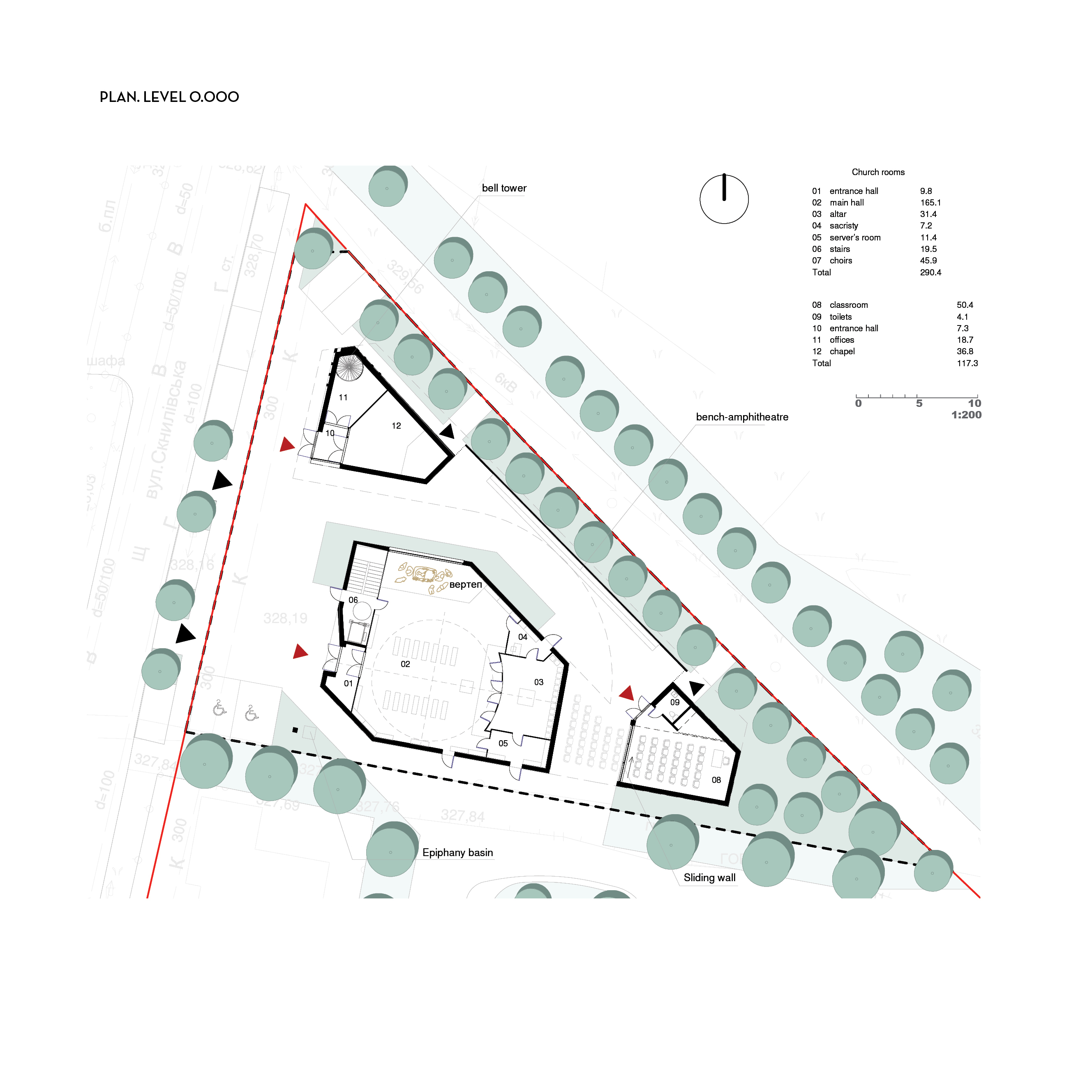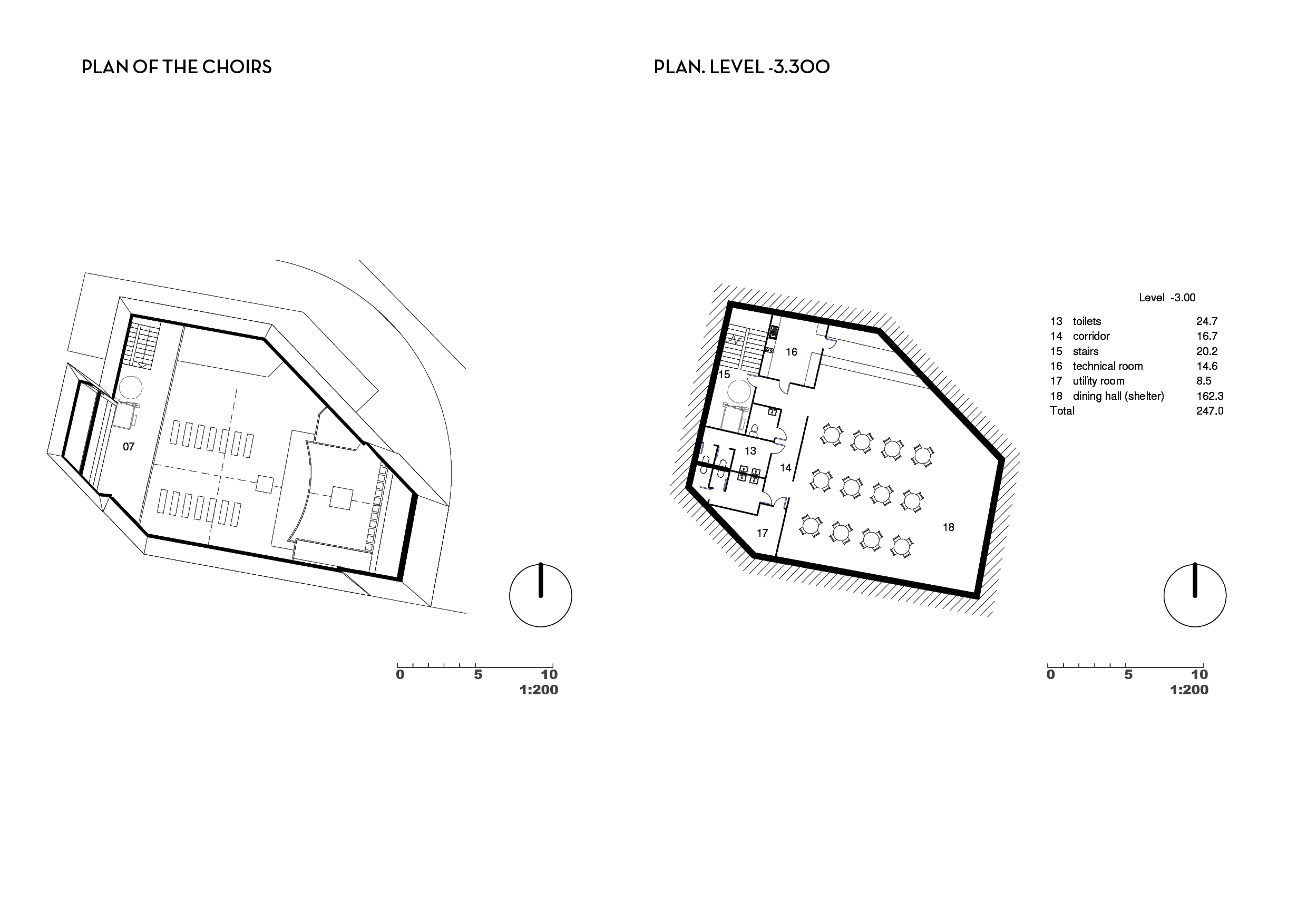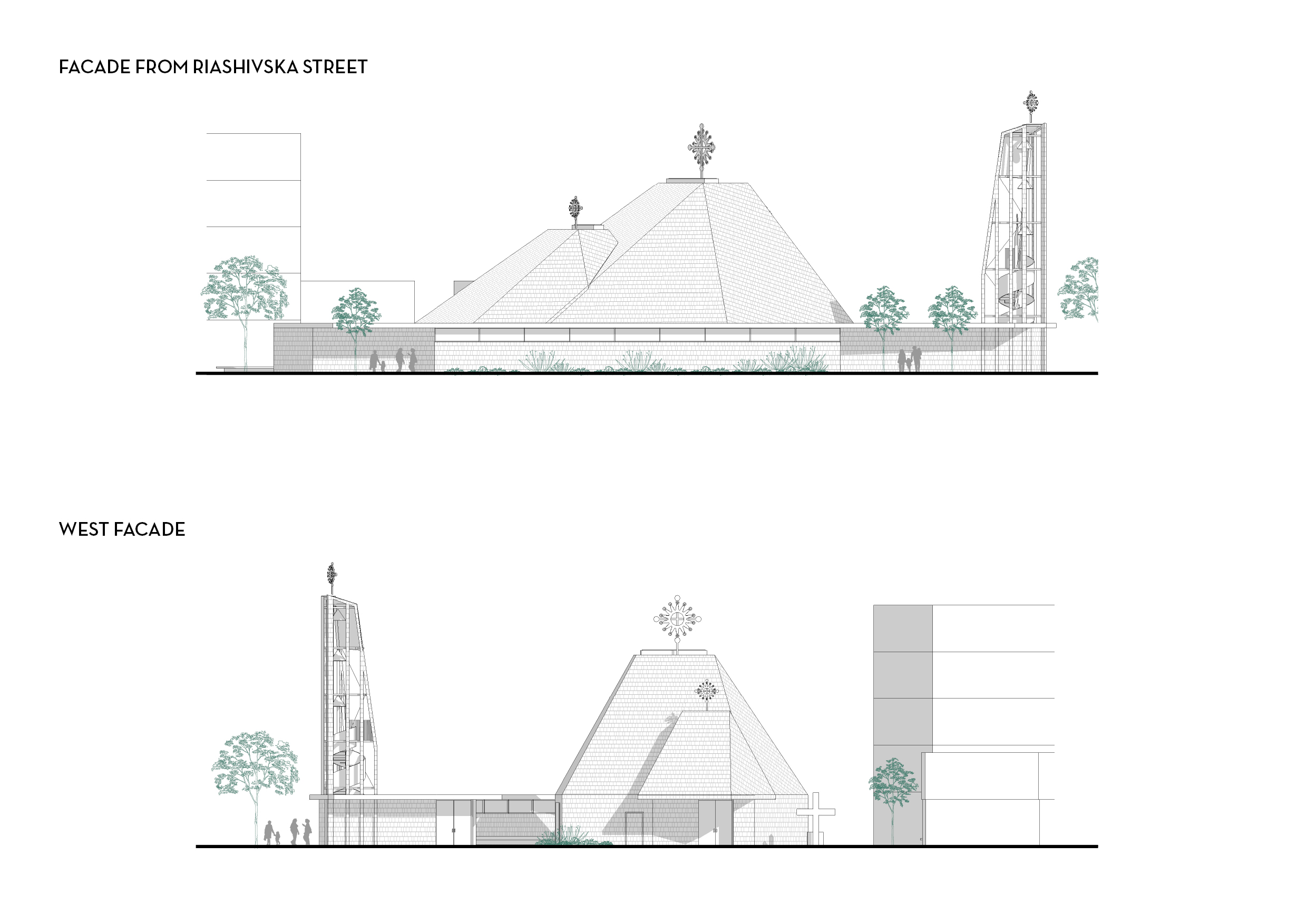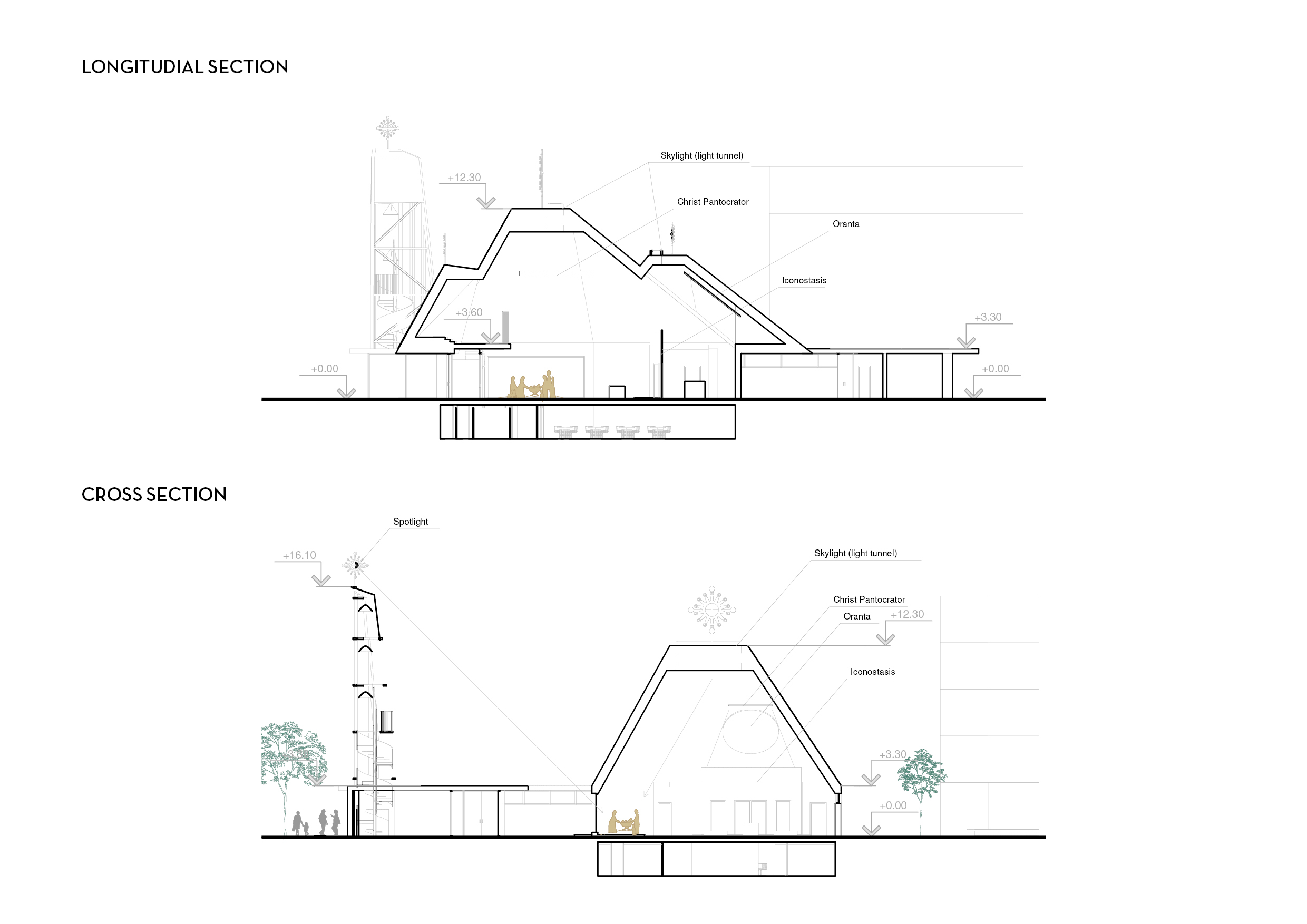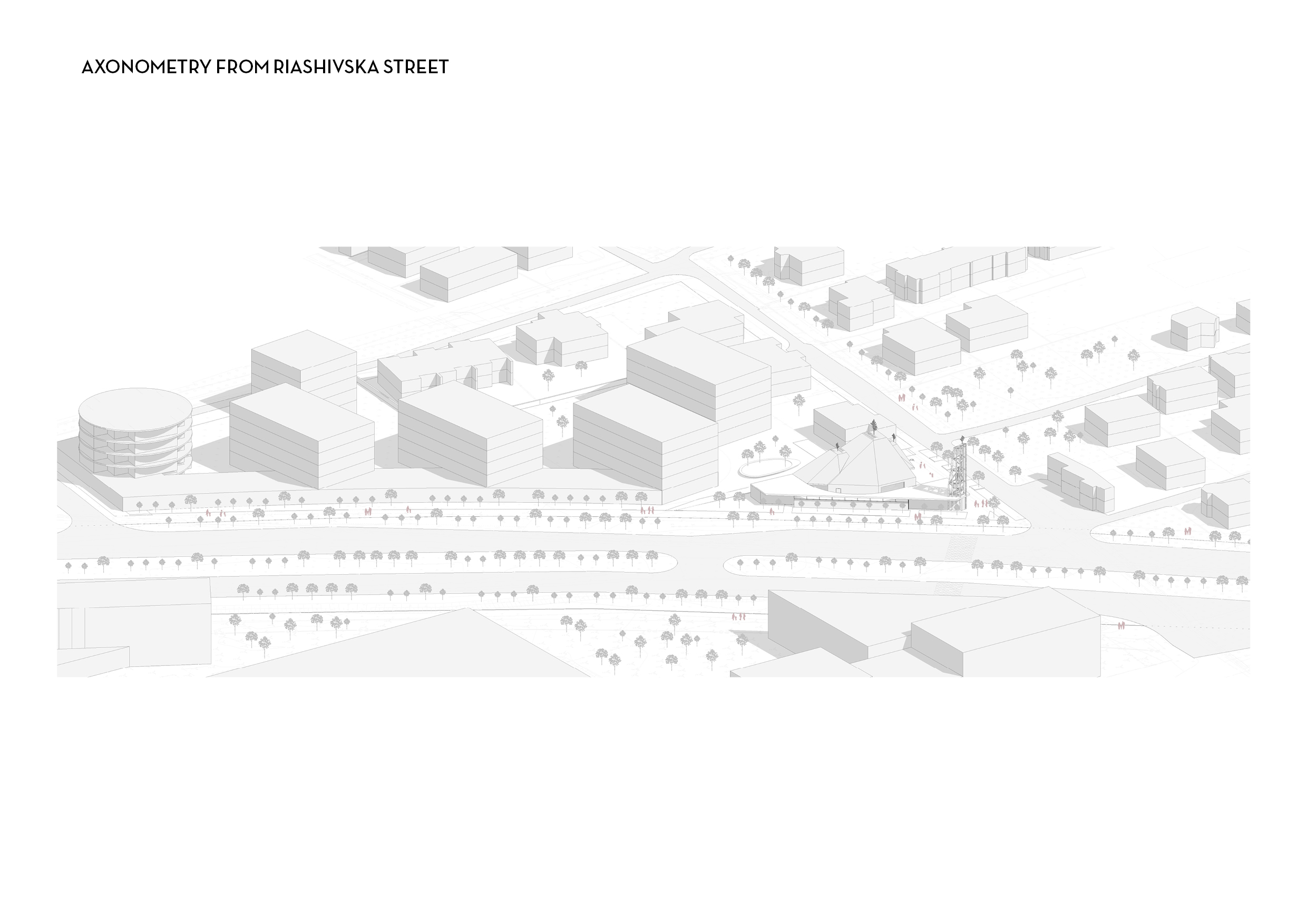YASKYNIA
CHURCH OF THE NATIVITY OF CHRIST ON RIASHIVSKA STREET IN LVIV
Year: 2025
Categories: Sacral, Public
Location: Lviv, Ukraine
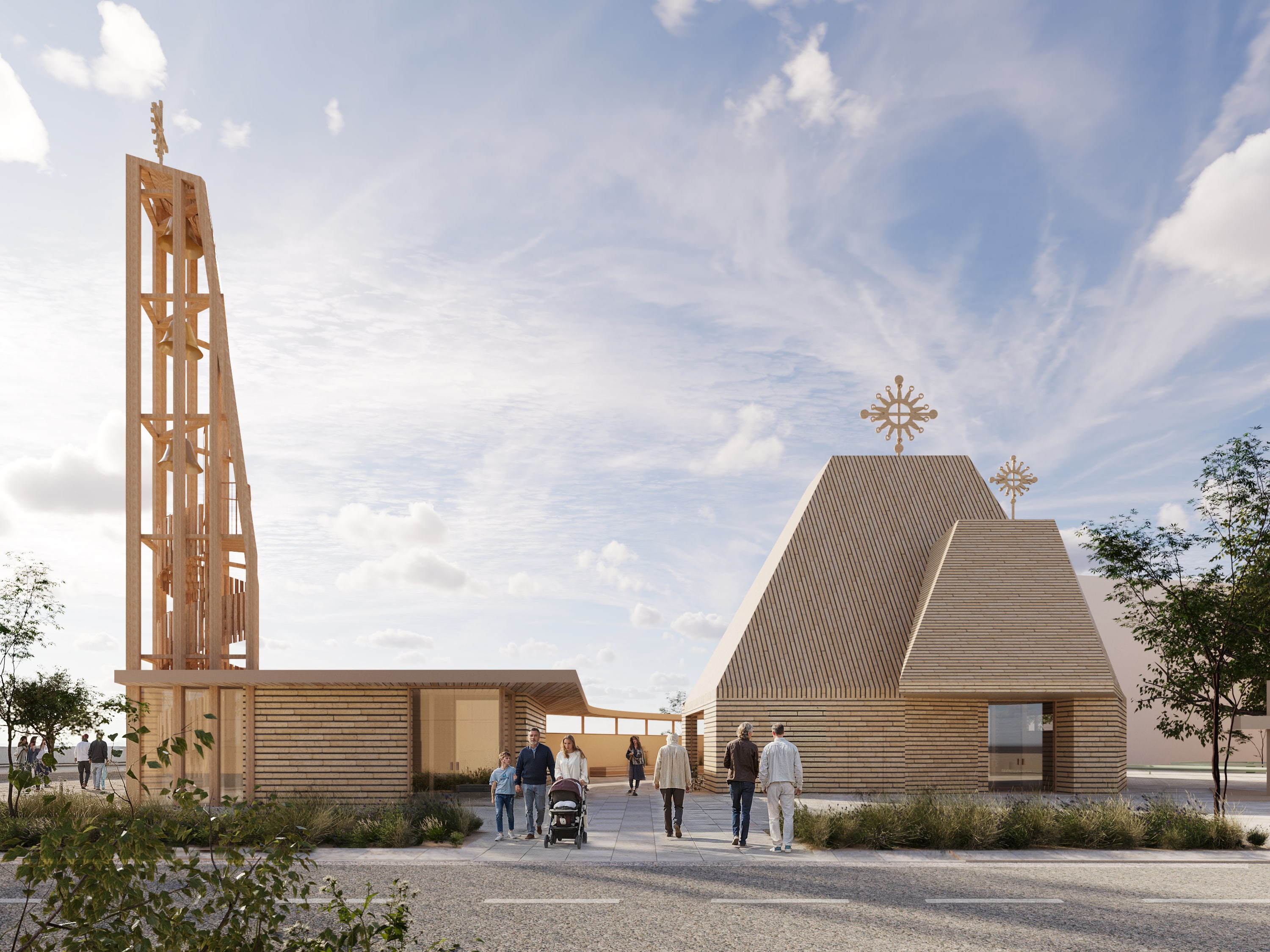
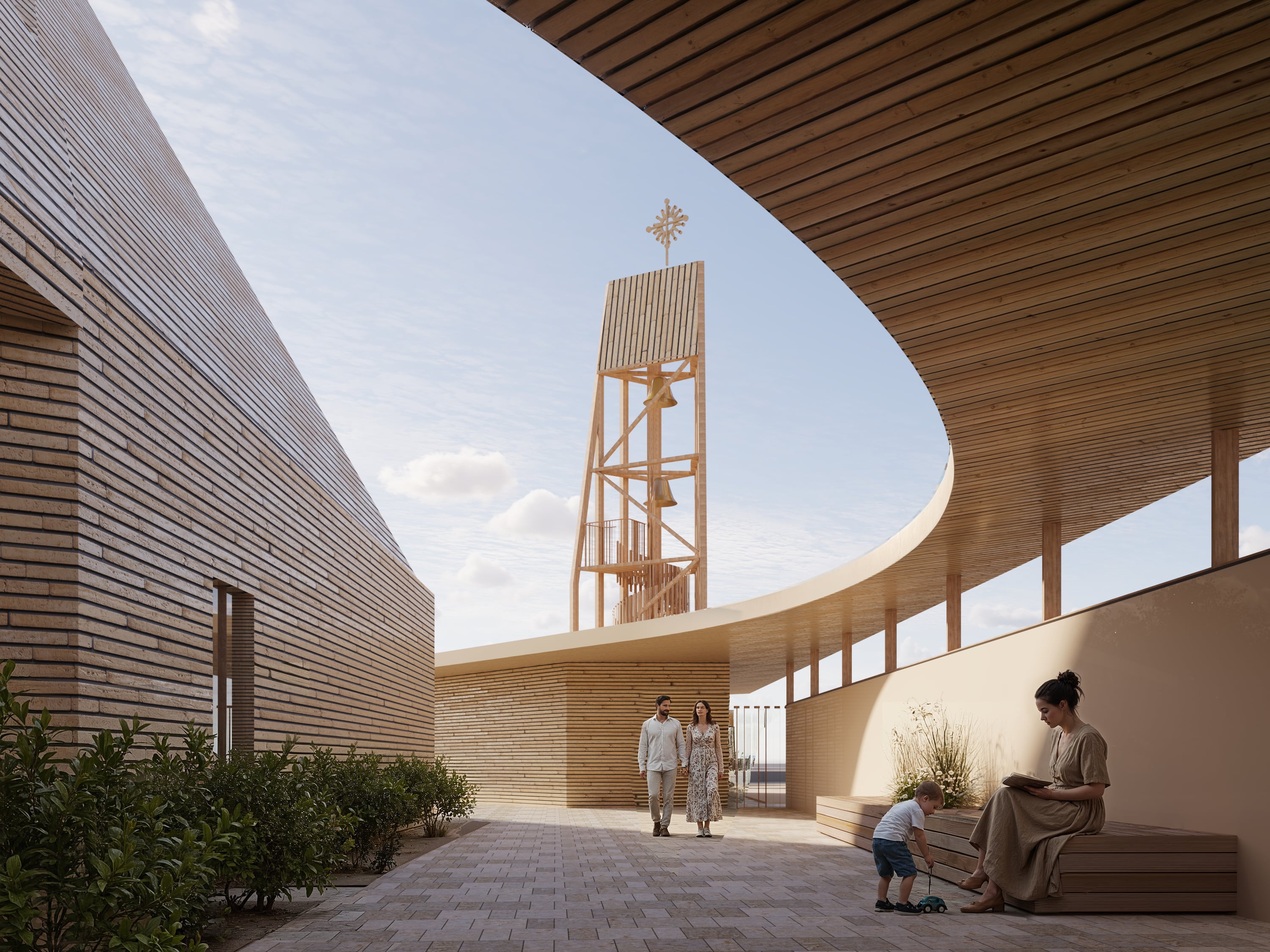
IDENTITY
The cave in which Jesus Christ was born serves as the conceptual image of the designed church. The natural, organic forms of the roof continue the traditions of Ukrainian wooden sacral architecture.
The landscape and spatial layout of the church meets canonical and functional requirements: the church is oriented with its apse to the east; the main entrance is arranged along the central longitudinal axis opposite the altar, on the main western façade; and all required spaces are organized in their canonical relationship.
The church is designed to accommodate 200 worshippers. In the left part of the main nave, by a large window opening, there is a designated space for the Nativity scene figures, arranged in profile on both sides of the newborn Jesus. These figures will be visible both to those inside the church and to people praying outside. Small upper skylights in the nave and apse will add dramatic natural light and provide natural ventilation.
In the underground level, a multifunctional refectory hall is planned, which can also serve as a shelter. This level includes sanitary facilities, including accessible restrooms for people with limited mobility (PLM). Stairs from the basement lead directly outside, and an additional emergency tunnel exit is provided beyond the collapse zone.
An elevator platform ensures access for people with limited mobility to the choir loft and the basement level.
A separate building houses a chapel with administrative premises, a boiler room, and an electrical switch room — this may serve as the first stage of the project’s realization. Attached to it is a bell tower structure containing a spiral staircase that leads to an observation platform. The bell tower will serve as a visual (viewpoint), acoustic (bells), and light dominant element — with lighting directed toward the Nativity scene and functioning as a symbolic beacon.
A classroom is designed on the apse side of the church in a detached building with natural lighting. The classroom includes a sliding partition, allowing the space to expand for lectures, cultural events, and outdoor educational activities under a canopy — such as children’s “Vacation with God” programs. Circulation around the church remains uninterrupted during liturgical services.
The chapel and classroom buildings are connected by a pergola-canopy and a protective screen shielding the courtyard from the nearby highway. This creates a cozy courtyard — a community space open to residents of both existing and newly developed housing.
The cross is conceived in the form of the Star of Bethlehem from the Church of the Nativity in Bethlehem, radiating fourteen rays, symbolizing the genealogy of Jesus Christ:
“So all the generations from Abraham to David are fourteen generations; and from David until the carrying away into Babylon are fourteen generations; and from the carrying away into Babylon unto Christ are fourteen generations.”
(Matthew 1:1–17)
The church entrance is intentionally designed as a low doorway, reminiscent of the “Door of Humility” in the Church of the Nativity in Bethlehem.

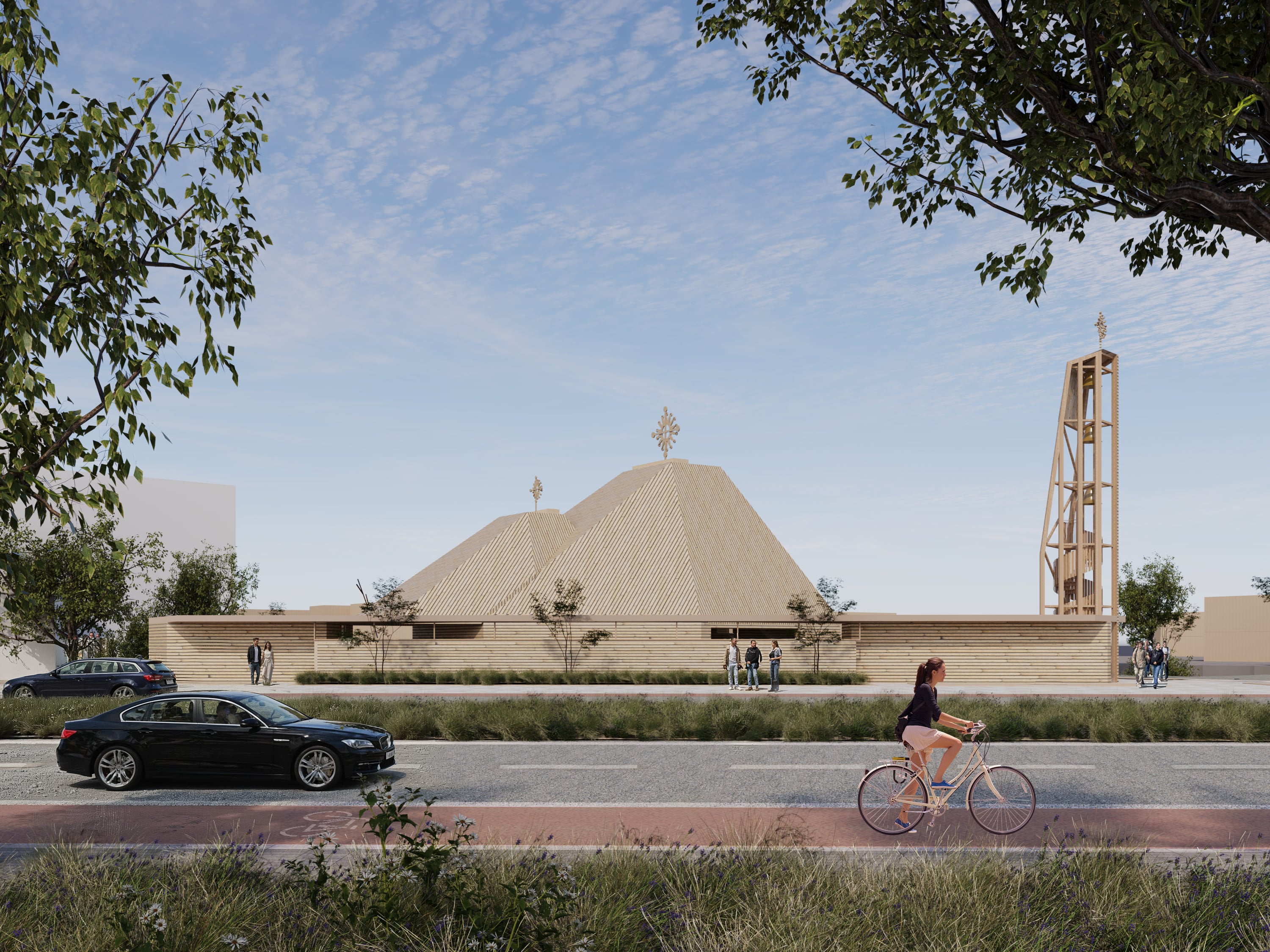

FORM DEVELOPMENT
Canonical factors: east–west orientation with the apse to the east, perimeter circulation, and canonical spatial arrangement of required premises.
Functional factors: provision for sacred, social, cultural, and educational functions.
Urban-planning factors:
setback for a religious building of consequence class CC2 (church for 200 worshippers) — 10 m from the red line (p.9.1 DBN B.2.2-12:2019);
setback for religious buildings of consequence class CC1 (chapel with bell tower, classroom) — 5 m from the red line (p.9.1 DBN B.2.2-12:2019).
PROJECT EXPECTATIONS
The project is sustainably integrated into its environment, maintaining harmony with existing single-family housing and future developments. The choice of materials and façade finishes ensures optimal contextual integration while emphasizing the sacred nature of the complex and its long-term durability.
ECOLOGICAL STRATEGY
The project incorporates several ecological strategies, including rainwater collection. The church and auxiliary buildings are arranged to form a quiet, enclosed courtyard adjacent to the main road. Permeable paving is used on paths and driveways to absorb surface water. A bioswale system with native plantings collects, filters, and stores stormwater for reuse in irrigation and other non-potable applications.
STRUCTURES AND MATERIALS
Underground level: reinforced concrete walls, columns, and foundations according to geological conditions; reinforced concrete slab above the shelter, fire resistance class REI 180.
Above-ground level: brick walls, metal roof structure, mineral wool insulation, façade finishes of ceramic granite, stone cladding, or polymer-coated metal panels.
s







